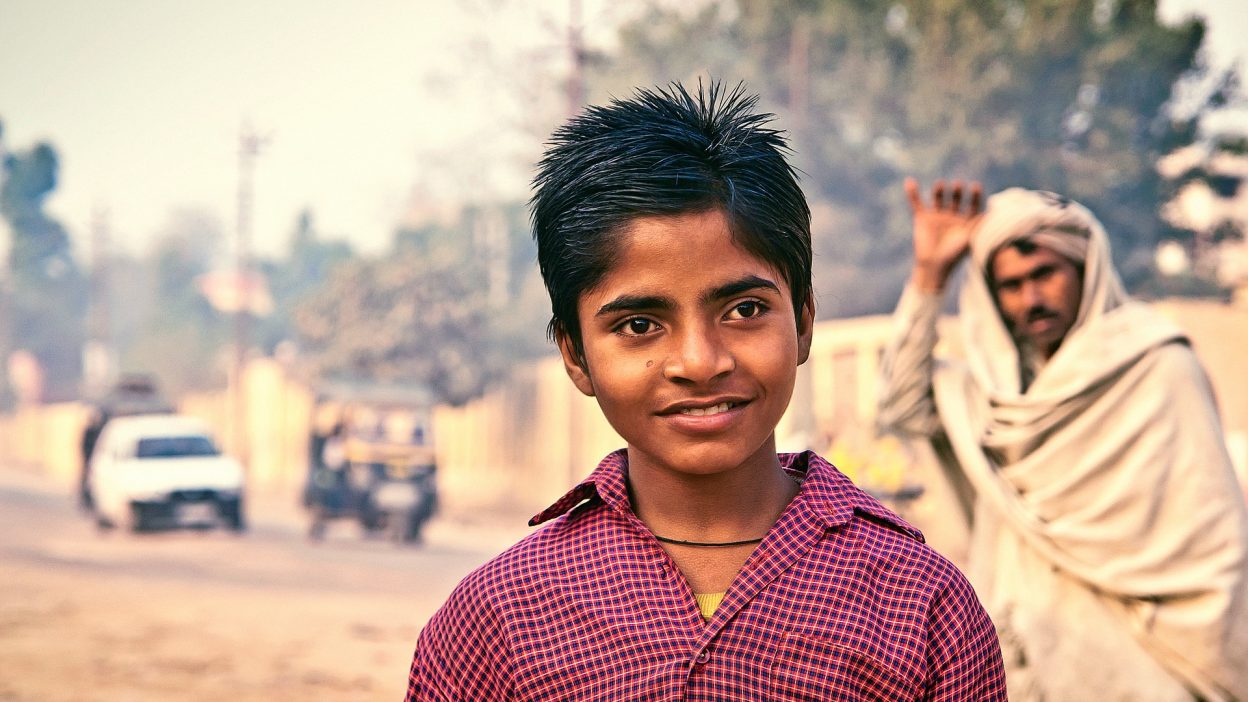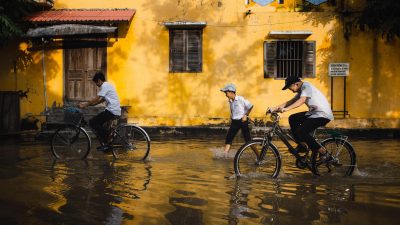A Fiery Catastrophe That Shook the Nation
1. The Deadly Inferno: When Heat Became a Killer
The 2015 Indian heatwave was one of the deadliest heatwaves in modern history, pushing temperatures to unbearable extremes and resulting in widespread devastation. The heatwave, which lasted from May to June, affected multiple states, particularly Telangana, Andhra Pradesh, and Odisha. With temperatures soaring above 48°C (118°F), the extreme heat transformed daily life into a struggle for survival.
Unlike ordinary summer heat, this catastrophe was brutal and relentless. Roads melted, water sources dried up, and power grids collapsed due to excessive demand. The soaring temperatures made it impossible for people to step outside, and the searing heatwaves turned bustling cities into deserted landscapes. It was not just an environmental phenomenon; it was a humanitarian crisis that claimed thousands of lives and left millions suffering.
2. What Led to This Unprecedented Heatwave?
Several factors contributed to this extreme weather disaster, making it one of the worst in India’s history. Climate experts pointed out that a combination of global warming, deforestation, and the El Niño effect created the perfect conditions for this inferno.
- El Niño’s Role: The presence of El Niño, a climatic phenomenon that warms the Pacific Ocean, disrupted monsoon patterns and reduced pre-monsoon showers, leading to extreme temperatures.
- Climate Change & Rising Temperatures: Over the past decades, global warming has been steadily increasing temperatures in South Asia, making heatwaves more frequent and intense.
- Urbanisation & Deforestation: Rapid urbanisation led to the loss of green cover and an increase in concrete structures, which absorb and retain more heat, causing the urban heat island effect.
- Lack of Water Sources: With shrinking reservoirs, low groundwater levels, and prolonged dry spells, many regions lacked the water needed to cool down temperatures.
The lack of preventive measures and poor urban planning only worsened the situation, turning an already hot summer into a deadly furnace.
3. Death Toll, Injuries, and Shocking Statistics
The 2015 Indian heatwave was one of the deadliest in recorded history, causing mass casualties and severe distress. The scale of destruction can be understood through these staggering numbers:
- Over 2,500 deaths: The extreme heat claimed more than 2,500 lives, with Andhra Pradesh and Telangana recording the highest fatalities.
- Thousands hospitalised: Cases of heatstroke, dehydration, and severe burns overwhelmed hospitals, leading to a medical emergency.
- Temperature records broken: Several cities recorded their hottest temperatures ever, with some areas surpassing 48°C (118°F).
- Economic losses: The disaster resulted in major economic setbacks, affecting agriculture, labour industries, and daily wage workers who were unable to work under the scorching sun.
4. The Human Cost: Suffering Beyond Numbers
While statistics help us understand the magnitude of the disaster, they fail to capture the immense human suffering that unfolded during this period. The worst affected were daily wage labourers, farmers, and homeless individuals who had no means to escape the intense heat.
Water shortages left entire villages desperate for relief, forcing many to walk miles in search of drinkable water. Families lost their loved ones, with elderly and young children being particularly vulnerable. The suffering extended beyond physical distress; the economic impact was devastating, leaving thousands of people struggling to recover their livelihoods.
As temperatures soared, hospitals overflowed with patients suffering from heat exhaustion, dehydration, and heatstroke. The situation was worsened by a lack of medical resources, and many victims succumbed simply due to delayed treatment or lack of awareness about heat-related illnesses.
5. The Government’s Response: Too Little, Too Late?
Despite the widespread warnings, the government’s response was criticised as inadequate and delayed. The authorities declared a state of emergency in the worst-hit regions and initiated relief efforts, but by then, the damage was already done.
Some key actions taken included:
- Issuing heatwave warnings and urging people to stay indoors.
- Setting up water distribution centres to provide relief.
- Launching awareness campaigns about heatstroke and dehydration.
However, many argued that these steps were reactive rather than proactive. Had proper preventive measures been taken earlier, thousands of lives could have been saved. The lack of long-term climate adaptation policies left India unprepared for such a catastrophe.
6. Environmental Impact: A Country Set Ablaze
The 2015 heatwave had far-reaching environmental consequences, disrupting ecosystems and intensifying the effects of climate change. Rivers and lakes dried up, causing water shortages in both urban and rural areas. The extreme temperatures led to forest fires, further depleting green cover and worsening air quality.
Birds and animals struggled to find food and water, with many perishing due to extreme heat. The imbalance in the ecosystem led to reduced crop yields, causing further distress to farmers who were already battling extreme weather conditions.
7. Lessons Learned: How Can India Prevent Future Heatwaves?
- Heatwave Preparedness Plans: Governments must implement early warning systems and response strategies.
- Green Infrastructure: Expanding forests, parks, and water bodies can help reduce urban heat effects.
- Sustainable Urban Development: Cities should adopt heat-resistant materials and increase green spaces.
- Public Awareness Campaigns: Educating people on heatwave survival tips can help reduce fatalities.
- Investment in Climate Research: Studying weather patterns can help forecast and mitigate future heatwaves.
8. Could This Happen Again? The Looming Threat of Future Heatwaves
The 2015 Indian heatwave was not an isolated incident but a warning of what could come. With rising global temperatures and unpredictable climate patterns, the possibility of even deadlier heatwaves looms large. Studies indicate that extreme weather events are becoming more frequent due to climate change, with heatwaves ranking among the deadliest. If preventive measures are not implemented, India and other regions may face similar or worse disasters in the coming years.
Urbanisation, deforestation, and industrial emissions contribute to rising temperatures, making cities more vulnerable. Without proper planning, future heatwaves could be even more catastrophic. Scientists warn that unless global carbon emissions are reduced and sustainable urban planning is adopted, extreme heat events will become the new normal, pushing healthcare systems, economies, and societies to the brink.
9. Lessons Learned: How India and the World Must Prepare for Future Heatwaves
The 2015 Indian heatwave exposed the weaknesses in preparedness and response mechanisms. Governments, NGOs, and climate experts have since emphasised the importance of early warning systems, public awareness campaigns, and infrastructure improvements to prevent mass casualties.
Countries need better heatwave action plans, including shaded public spaces, accessible drinking water stations, and heat-resistant infrastructure. Healthcare facilities must also be equipped to handle heatstroke emergencies, and authorities should enforce regulations protecting outdoor workers during peak heat hours.
The disaster served as a wake-up call, pushing India to integrate heatwave preparedness into its national disaster management plans. However, global cooperation is needed to combat the worsening impact of climate change, as heatwaves are no longer regional issues but global crises demanding urgent action.
10. Conclusion: The 2015 Heatwave—A Warning We Cannot Ignore
The 2015 Indian heatwave was a tragic disaster that claimed thousands of lives and exposed the devastating impact of extreme weather conditions. It highlighted the urgent need for proactive climate action, better urban planning, and effective government policies to protect vulnerable populations from future catastrophes.
Ignoring the lessons of 2015 would be a costly mistake. With climate change intensifying, similar disasters are bound to occur unless comprehensive strategies are adopted. Governments, scientists, and communities must work together to mitigate risks and build a future where such mass casualties are avoided. The question is not whether another deadly heatwave will strike—but whether we will be prepared when it does.
FAQs
1. What caused the 2015 Indian heatwave?
The 2015 heatwave was caused by extreme high temperatures, lack of rainfall, urban heat islands, and deforestation, all worsened by climate change.
2. How many people died in the 2015 heatwave?
More than 2,500 people lost their lives, making it one of the deadliest heatwaves in Indian history.
3. Which states were worst affected by the heatwave?
Andhra Pradesh and Telangana were the worst-hit states, accounting for over 85% of the total deaths.
4. Has India taken any steps to prevent future heatwaves?
Yes, India has implemented heat action plans, early warning systems, and awareness campaigns to reduce casualties in future heatwaves.
5. How can people protect themselves during a heatwave?
Staying hydrated, avoiding outdoor activities during peak heat, wearing light clothing, and staying in cool, shaded areas can help prevent heat-related illnesses.




